Trading : 7am to 5pm (Mon-Sun)
Call Us : (03) 7071 0777
Email Us : sales@primalhunter.com.au
NEED HELP?
Hours: 7am-5pm (Mon-Sun)
Ph: (03) 7071 0777
E:sales@primalhunter.com.au

Kayak fishing is one of the most thrilling ways to get out on the water and reel in your next big catch. There's something special about the peaceful glide across still waters or the adventure of navigating tricky spots where larger boats simply can’t go.
Whether you’re a seasoned pro or just starting your kayak fishing journey, the task of picking the right kayak can feel like a minefield. With so many options and price tags to consider, it’s easy to get lost in the details.
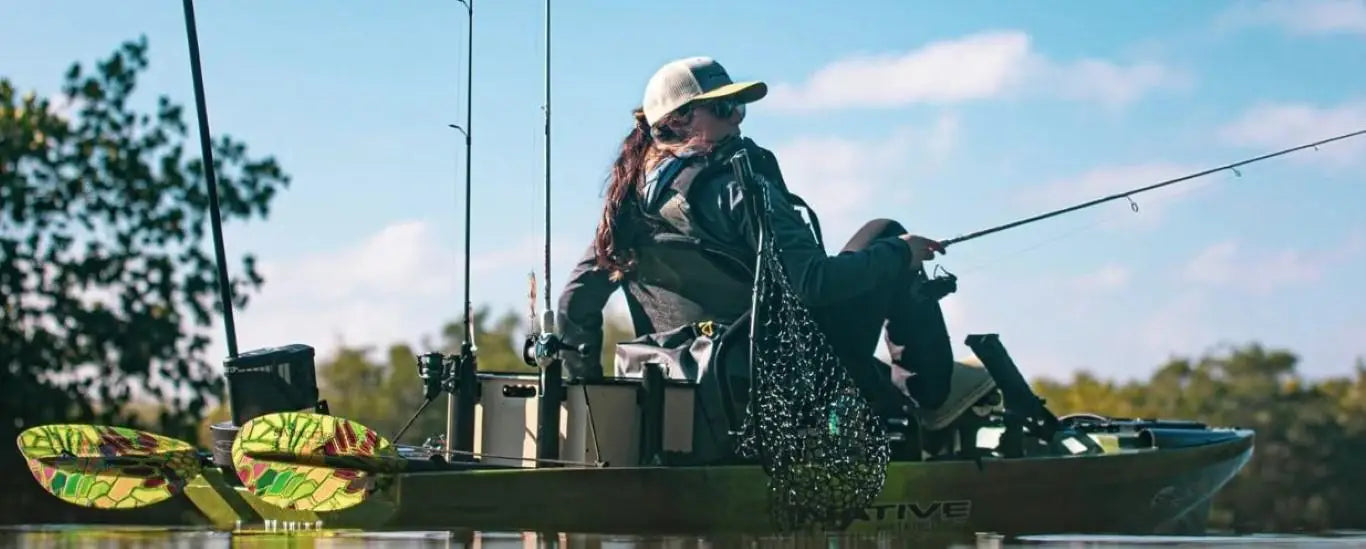
But here’s the secret: You don’t need to spend a fortune to get the perfect fishing kayak. In fact, by understanding what truly matters, you could save yourself hundreds, if not thousands of dollars and still end up with a kayak that’s perfect for your needs.
This guide will walk you through everything Aussie anglers need to know when selecting the right fishing kayak. We’ll break down the factors that matter, from kayak types to performance features, and help you make a decision that fits both your fishing style and your budget.
Ready to find the perfect fishing kayak without overpaying? Let’s dive in.
Before you even think about the brand or features of a kayak, it’s crucial to consider where you’ll be fishing most often. Different kayaks are built for specific environments, and knowing the waters you’ll be tackling is key to making the right choice.
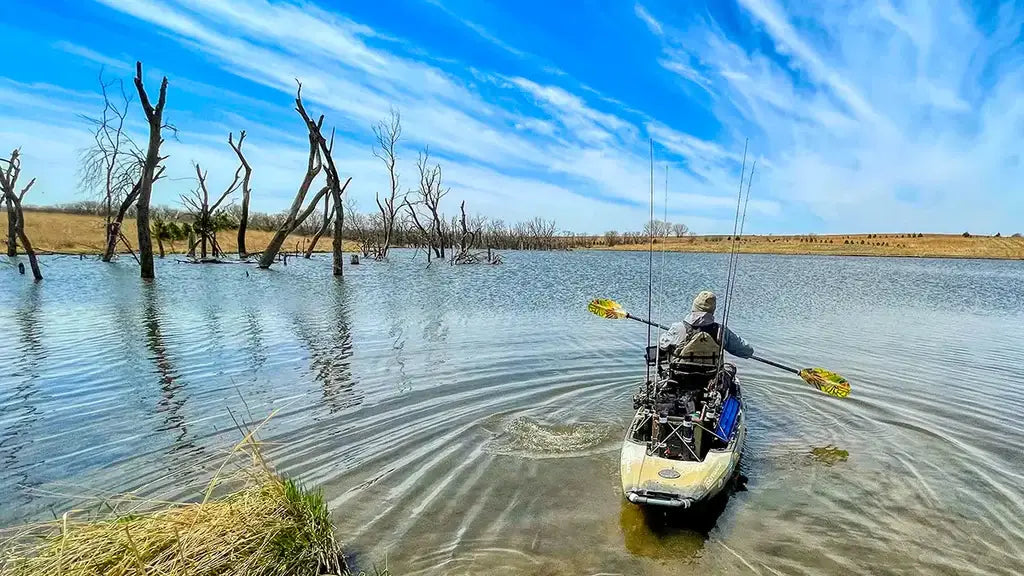
Lakes and Ponds:
If your go-to spots are calm, freshwater locations like lakes or dams, you’ll want a kayak that focuses on stability and comfort. A wider hull provides extra stability, making it easier to fish for long hours even stand up to cast or stretch your legs.
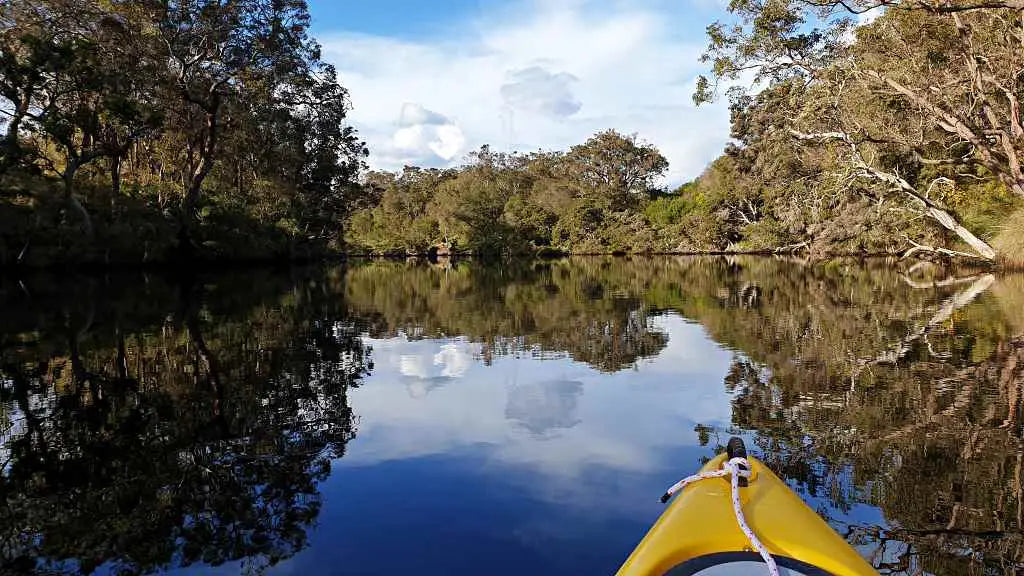
Rivers and Creeks:
Fishing in rivers or fast-moving streams requires something a bit more agile. Look for a kayak that’s sleek and responsive—one that can easily navigate narrow channels, sharp turns, and flowing currents. A shorter design is ideal for quickly changing directions without losing control.
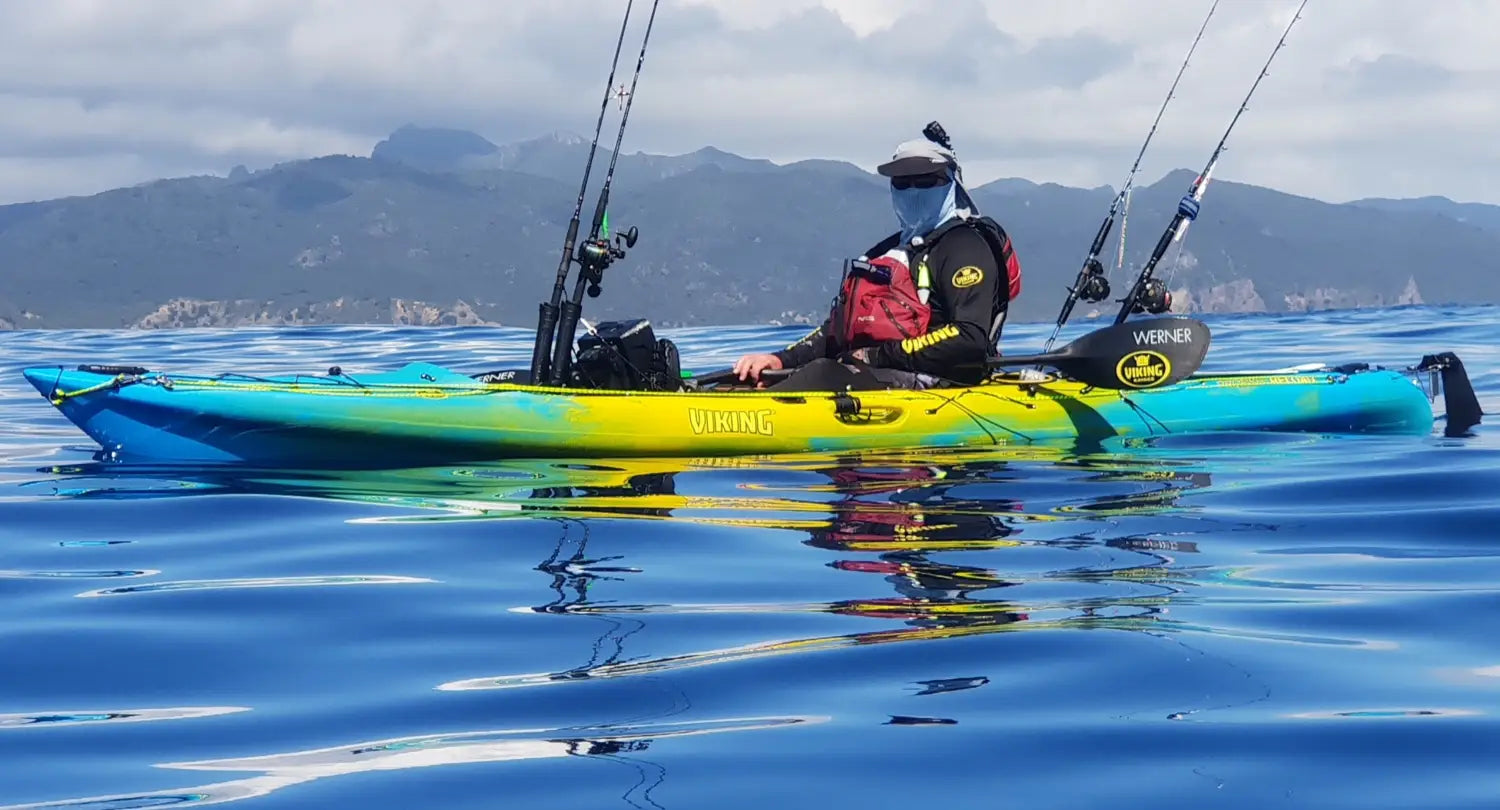
Saltwater and Coastal Waters:
If you're heading out to open waters like the ocean or larger bays, you’ll need a more robust kayak built to withstand choppy waves and saltwater. These kayaks are typically longer and designed for superior tracking, making them perfect for long distances and rough conditions. You’ll also want one that’s durable enough to handle the salty elements and the occasional tough battle with a big catch.
By assessing where you’ll be spending most of your time, you’ll set yourself up to choose the best kayak for these conditions - ensuring you have the right kayak for the job.
When choosing a fishing kayak, another important decision you’ll face is whether to go with a paddle kayak or a pedal-powered kayak. Each option offers distinct advantages depending on your fishing style and the waters you plan to navigate.
Let's break down the key differences to help you decide which one will make your fishing trips easier and more enjoyable.
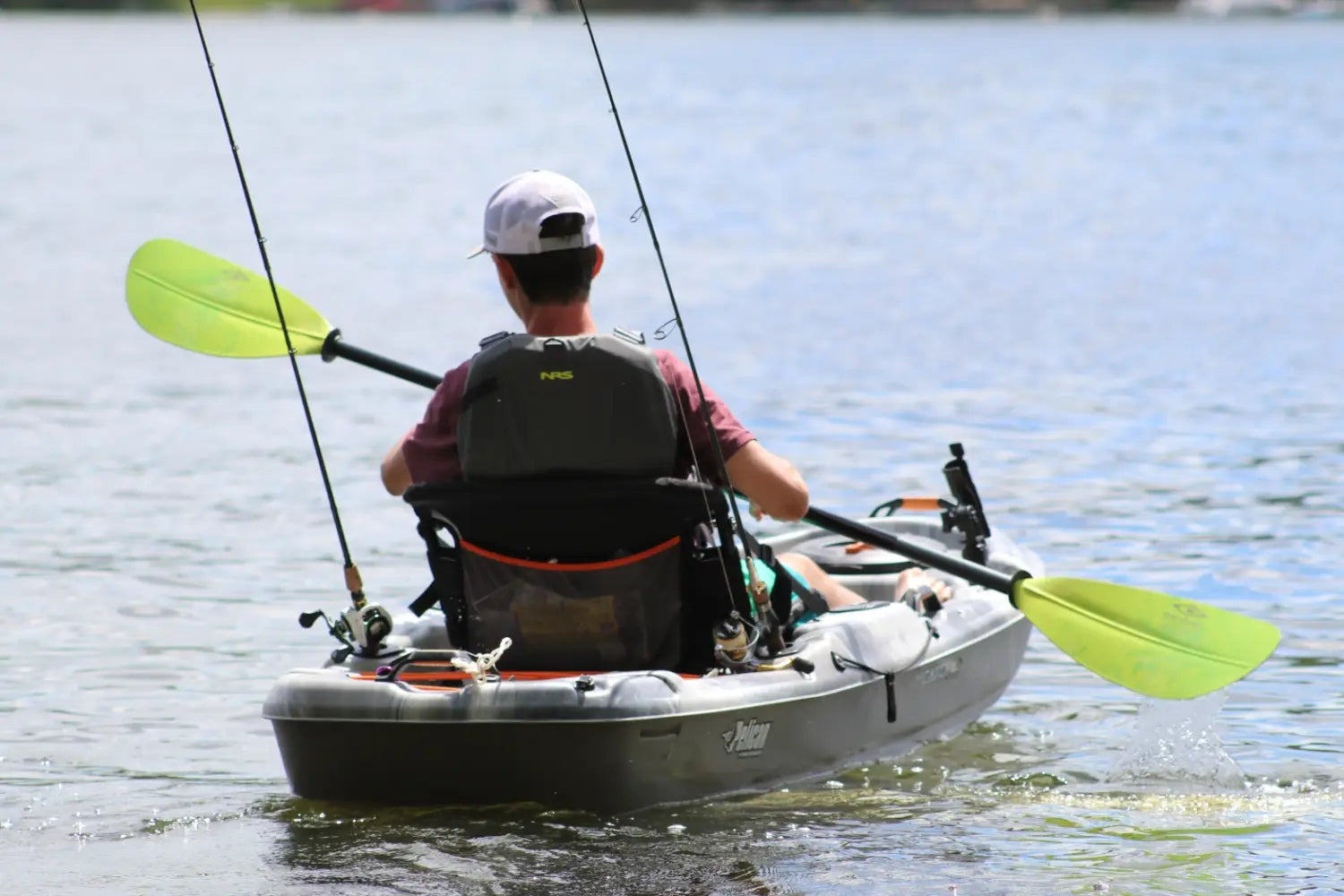
Paddle Kayaks:
These are the classics of the kayaking world—light, agile, and affordable. Paddle kayaks are perfect if you like the simplicity of using your own muscle power to navigate through waterways. Plus, they're excellent for shallow waters with lots of plant life.
Pedal-powered kayaks can be prone to snagging, damage or obstruction from vegetation /debris, while paddles allow you to easily navigate around such obstacles, offering greater versatility in various water conditions.
They also tend to be more affordable than pedal kayaks, making them a great option for anglers on a budget who still want to enjoy the excitement of kayak fishing.
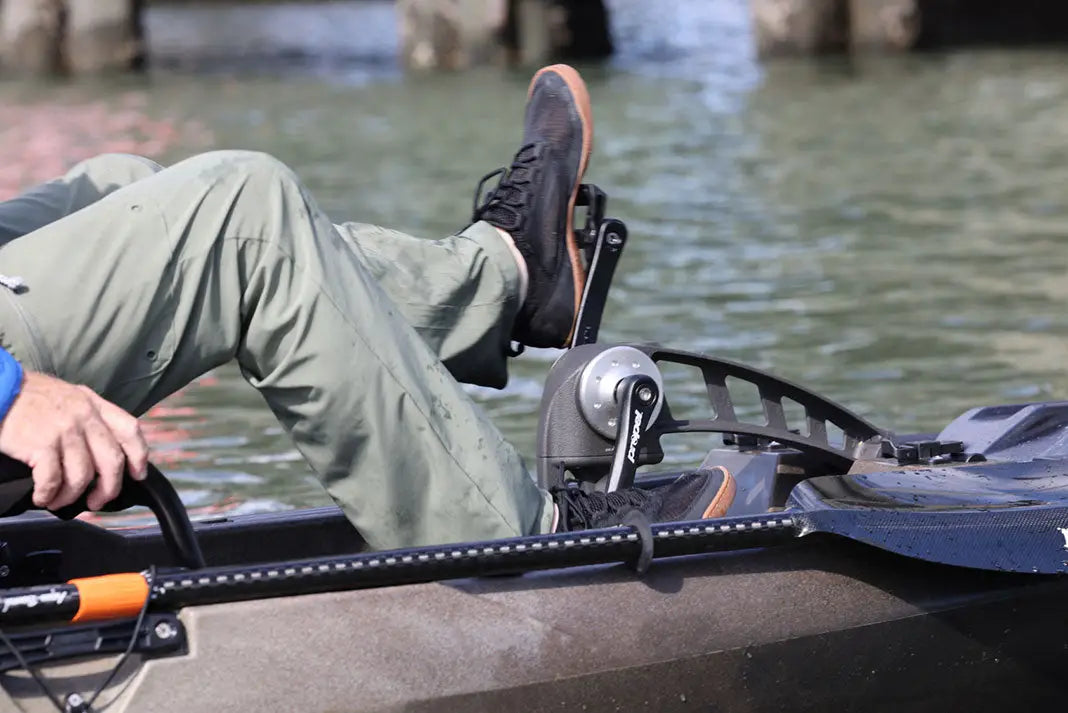
Pedal Kayaks:
Pedal kayaks are a game-changer, providing hands-free propulsion that can significantly reduce fatigue, especially when traversing large bodies of water. This is a big advantage for anglers, as it allows you to fish for longer periods without the strain of paddling, helping to avoid sore arms.
Many pedal kayaks also come equipped with rudder systems, which are incredibly useful when you have a fish hooked and need to maneuver your kayak without struggling with a paddle. Whether you're trying to stay in one spot or adjust your position, the combination of pedal power and a rudder system gives you better control, allowing you to focus entirely on reeling in your catch.
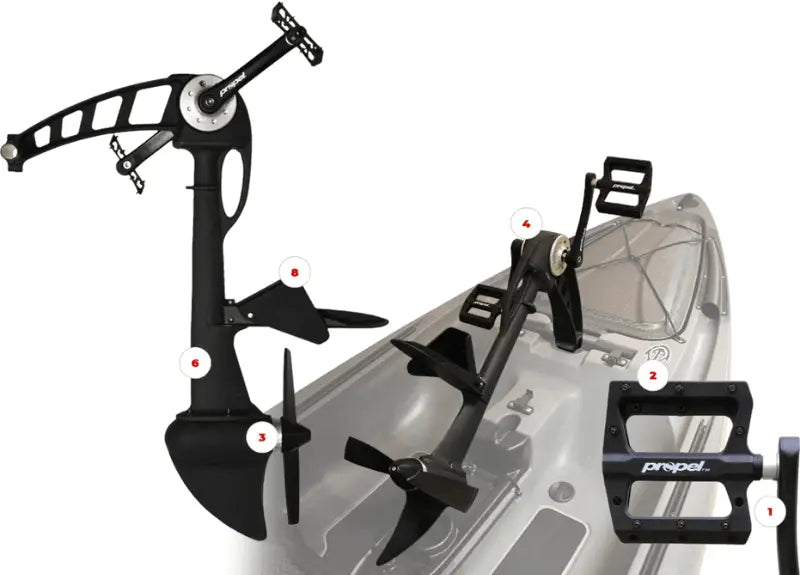
While pedal kayaks are generally more expensive than paddle kayaks, they provide unmatched comfort and hands-free convenience, making them a valuable investment for avid anglers seeking to enhance their fishing experience.
Ultimately, your decision between paddle or pedal comes down to your budget, fishing style, and how much you’re willing to invest in convenience. Both have their strengths, and the right choice for you will depend on the type of fishing you’re into and the waters you plan to explore.
When it comes to selecting a kayak, size matters – but not just in the way you might think. Whether you're tackling the narrow, winding rivers or cruising the expansive Aussie coastline, choosing the right kayak size can make a huge difference in stability, speed, and overall comfort. And don’t forget about weight capacity – you need a kayak that can handle both you and your gear without compromising performance.
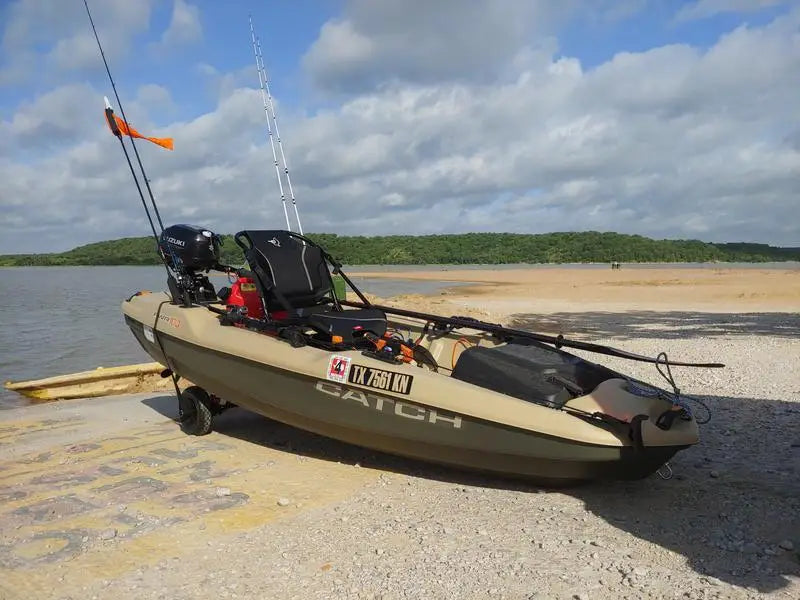
Shorter Kayaks (Under 12 feet):
If you love fishing in rivers, small lakes, or tight creeks, a shorter kayak might be just what you need. These kayaks are known for their maneuverability, making them perfect for squeezing through tight spots and navigating narrow channels.
While they’re not as fast as longer kayaks, their ability to turn sharply and handle shallow waters gives them a significant advantage when fishing in areas where space is limited. If agility and getting into hidden fishing spots are your top priorities, a shorter kayak is the way to go.
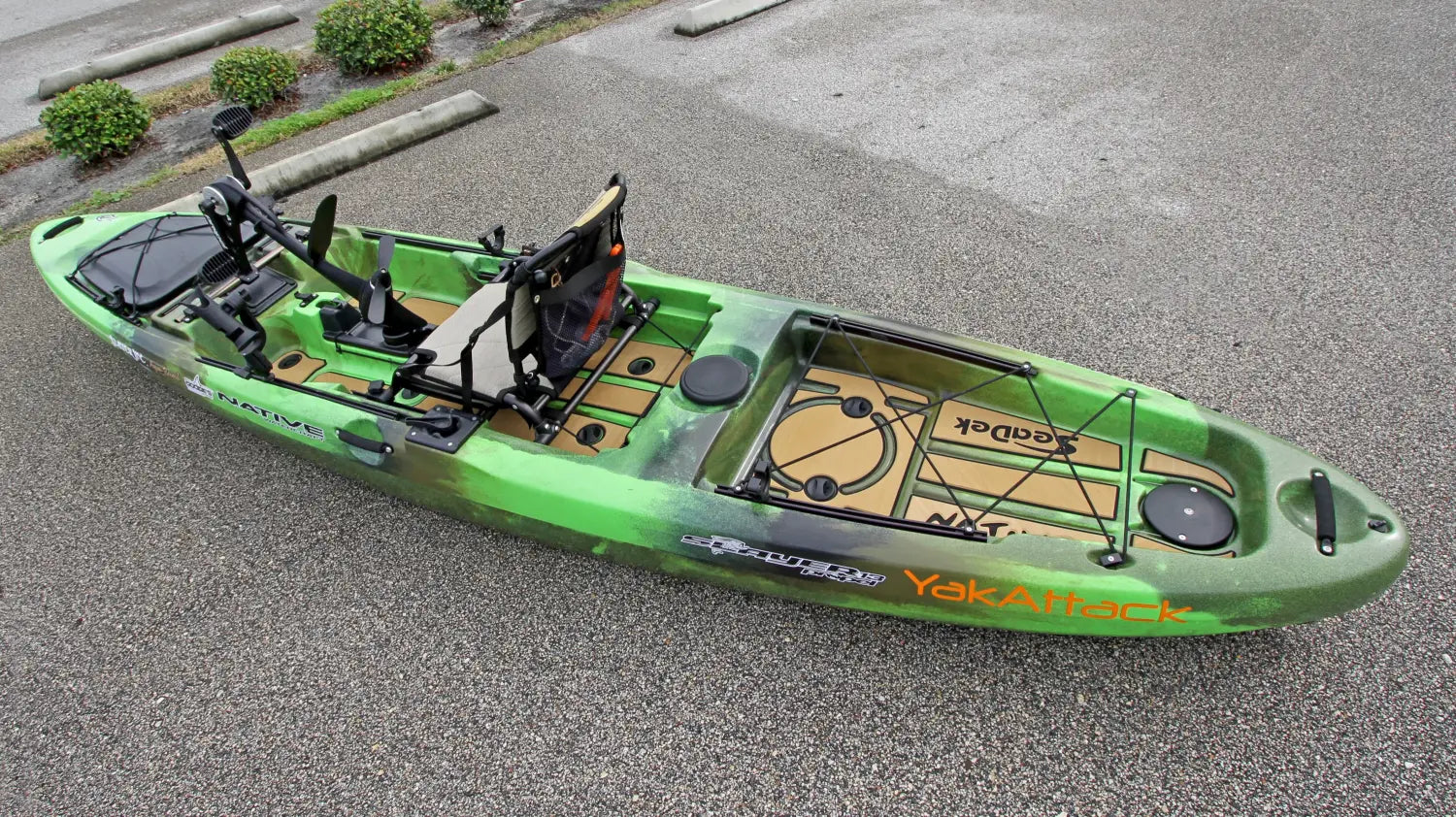
Longer Kayaks (12 feet or more):
For those venturing into open water, larger bays, or coastal fishing spots, a longer kayak is your ticket to speed and stability. These kayaks are built for tracking and covering long distances with ease. They also tend to have more room for gear, so you can bring along all your rods, tackle, and even a cooler for your catch.
If you're planning on fishing in coastal areas where the conditions can change quickly, a longer kayak will handle choppy water and wind far better than its shorter counterparts. Plus, a narrower beam on these longer kayaks is ideal for coastal conditions—it helps you cut through the water faster and maintain better control when the waves are rolling in.
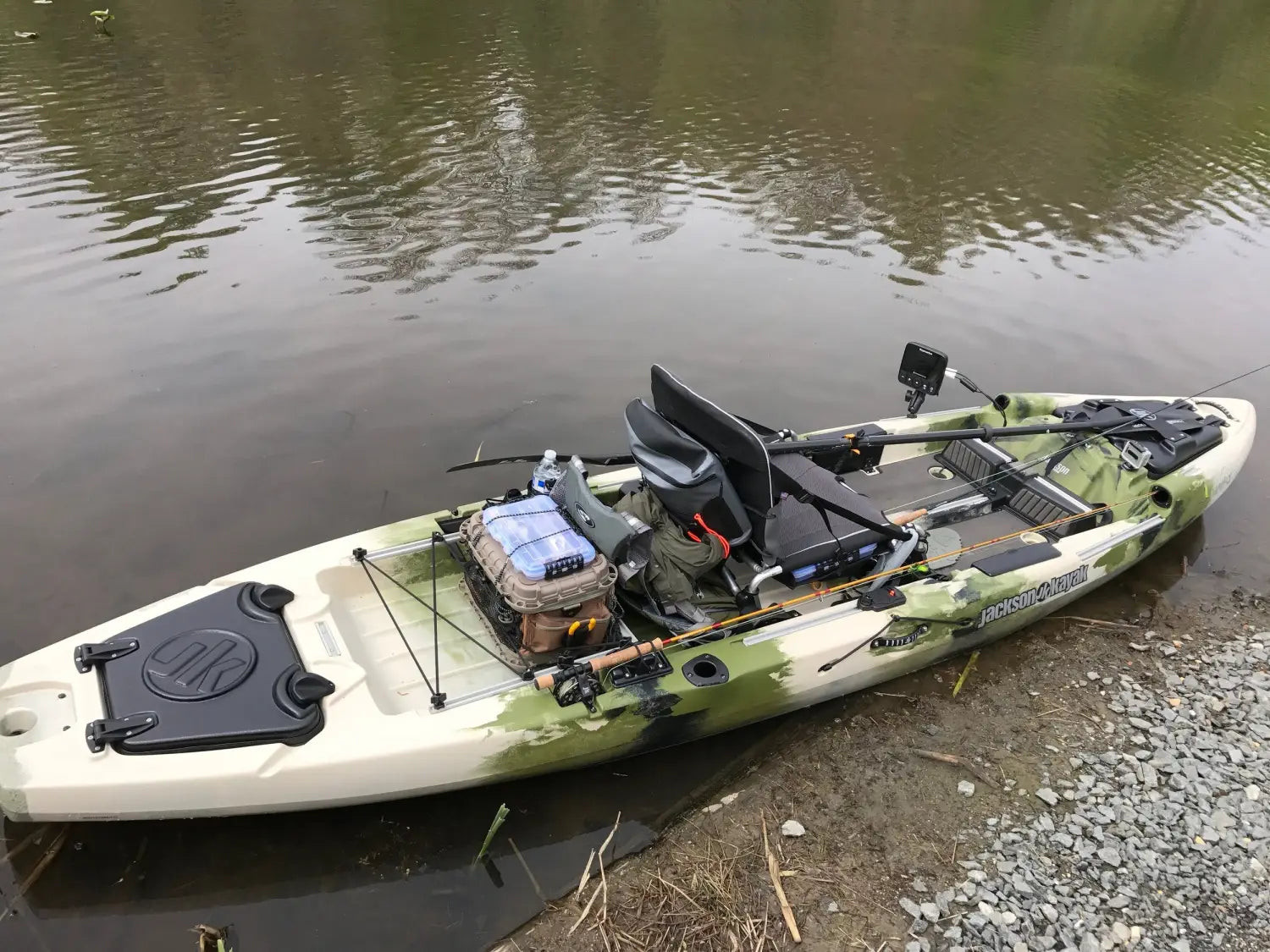
Weight Capacity:
The right weight capacity is crucial for stability and performance. Overloading your kayak can make it unstable, affecting safety and comfort.
Make sure your kayak can support both your weight and all your gear—tackle boxes, rods, coolers, and safety equipment. A properly sized kayak ensures better stability, allowing you to fish comfortably for longer.
By understanding how weight and size affect performance, you can choose the perfect kayak for any fishing environment, from calm lakes to rough coastal waters.
When it comes to selecting a fishing kayak, two crucial factors often stand out: on-board space for your gear and transportability. Whether you're paddling out on your local river, casting off a quiet lake, or fishing the Aussie coastline, having enough space for your equipment and an easy way to transport your kayak can make all the difference in your overall experience.
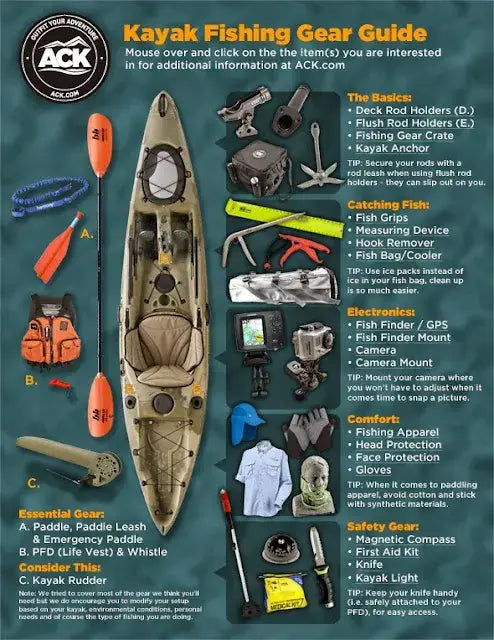
On-Board Space:
For serious anglers, having enough room for rods, tackle boxes, coolers, and essentials is crucial. Look for kayaks with ample storage like rear compartments, front hatches, and built-in rod holders to keep gear secure and accessible.
If you have joint issues, extra space for comfortable seating and movement is essential. Ergonomic seating and adjustable footrests can reduce discomfort on long trips. For extended fishing outings, opt for a kayak with easy access to all your gear.
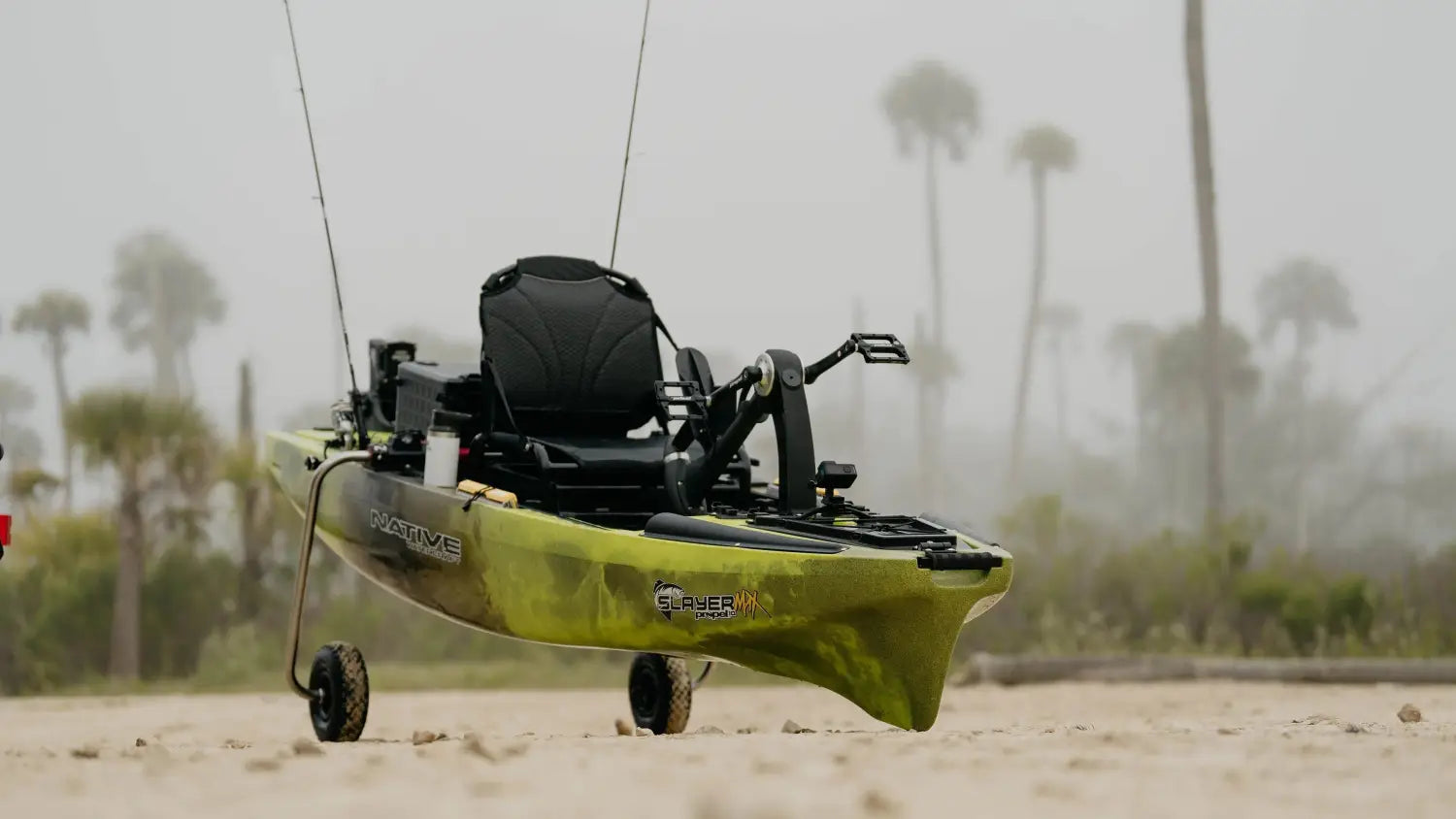
Transportability:
Getting your kayak to and from your fishing spot can be just as challenging as the fishing itself, especially in remote areas. Choose a lightweight kayak with carrying handles or trolleys for easier loading and unloading, particularly if fishing solo.
Larger, feature-packed kayaks may require a trailer, so consider your budget and vehicle storage needs. For smaller vehicles, a compact kayak that fits on roof racks or in the back of your ute might be a better option.
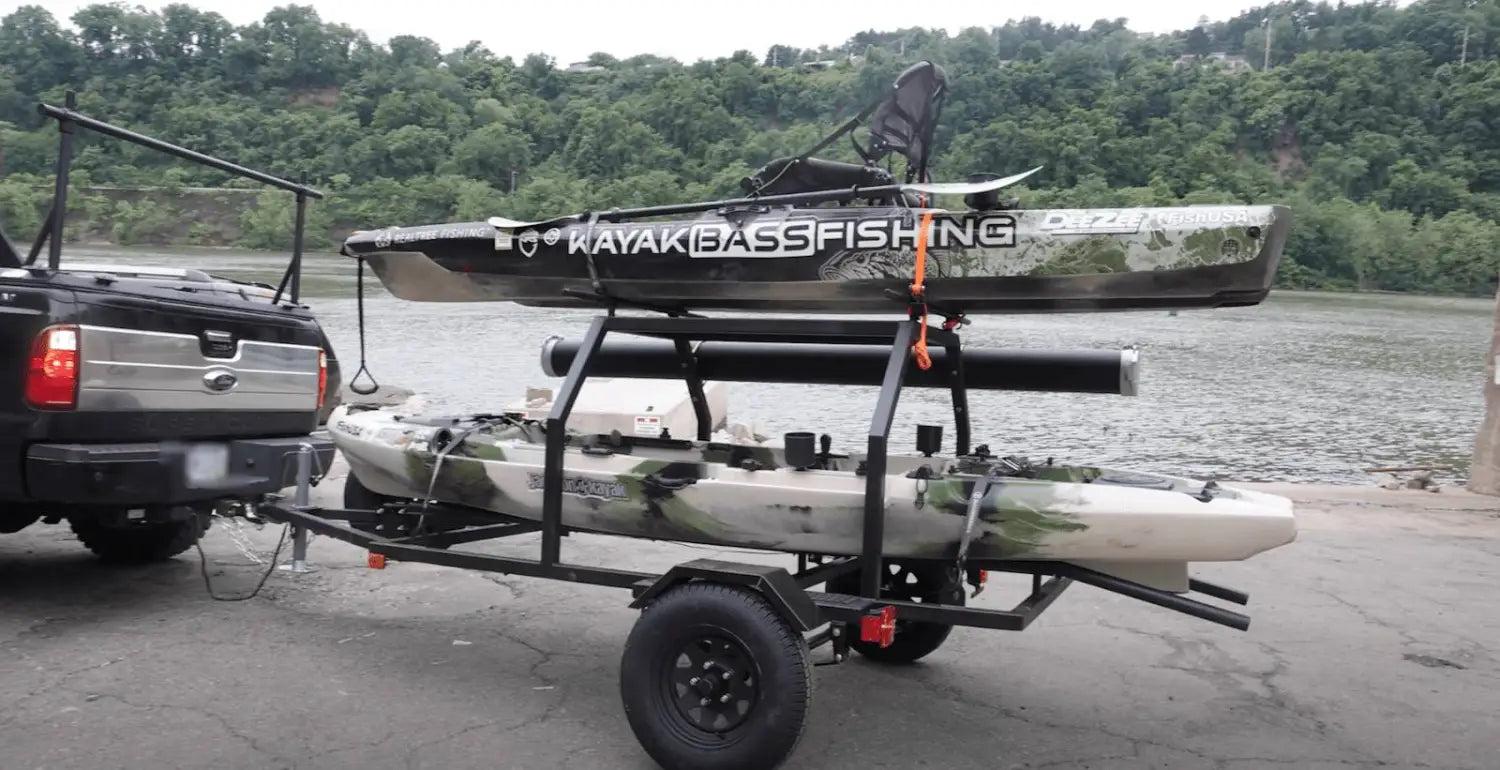
Ultimately, choosing the right kayak isn’t just about what works best on the water—it’s also about what makes sense for your lifestyle and comfort. A kayak that offers both plenty of on-board space and easy transport will ensure your fishing trips are hassle-free and enjoyable, no matter where your adventures take you.
When it comes to choosing the right kayak for your fishing adventures, it's not just about the hull and size – the features and accessories that come with your kayak can significantly enhance your experience on the water. Whether you're chasing fish in the still waters of a remote lake or battling the waves off the coast, having the right gear at your fingertips will make all the difference.
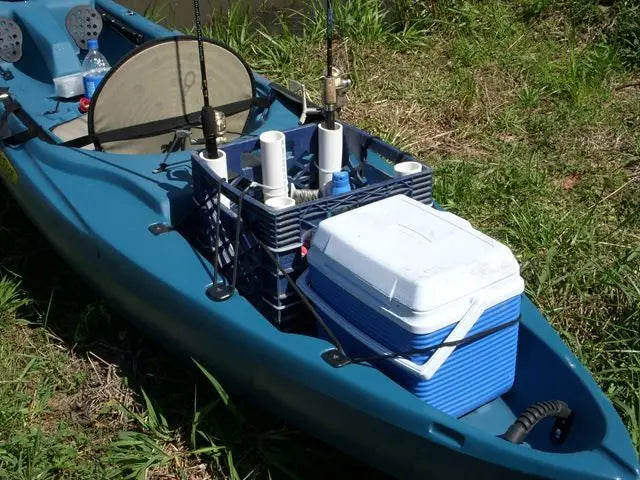
Storage Space:
Fishing means gear – and plenty of it. Whether it’s tackle boxes, rods, a cooler, or your favourite snacks, you’ll need room to bring everything along. Look for kayaks with front and rear hatches, as well as built-in bungees or extra compartments for easy access to your gear.
This is especially important if you’re planning longer trips or fishing in areas where you need to keep things secure while you cast. Ample storage means you can bring what you need without cluttering the kayak, leaving you plenty of room to move and fish.

Rod Holders:
Imagine being able to fish and paddle without worrying about where to place your rods. Many fishing kayaks come with built-in rod holders, allowing you to keep your rods secure and within reach.
Adjustable rod holders are a bonus, letting you position your rods exactly how you need them, whether you're trolling, casting, or simply taking a break. They free up your hands and ensure your rods stay in place, even in rougher conditions.

Fishing-Specific Accessories:
For the serious angler, the right accessories can make your fishing experience more productive and enjoyable. Some kayaks come pre-equipped with game-changing gear like fish finders, livewells, or built-in tackle trays.
These additions can be a game-changer, especially if you're heading into unfamiliar waters or need to keep your catch fresh. A kayak with these features can elevate your fishing game by helping you locate fish more effectively and store them safely for the ride back.
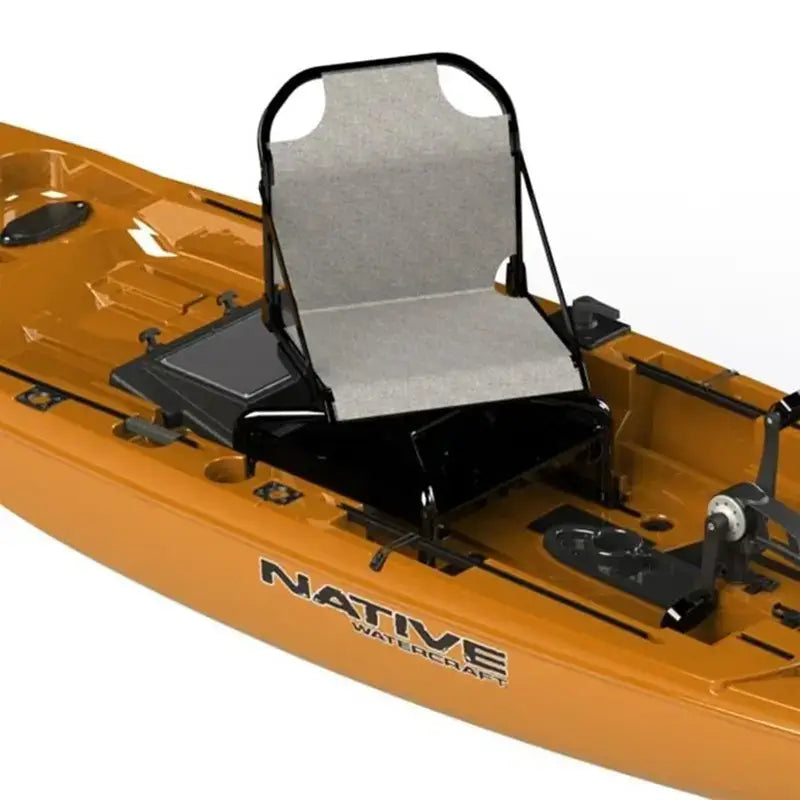
Comfort and Adjustability:
Aussie fishing trips can last for hours, so comfort is essential. Look for kayaks with adjustable seating, well-padded seats, and ergonomic footrests to keep you comfortable for long days on the water.
If you’ve got bad knees or a sore back, some kayaks offer lumbar support or padded backrests to help reduce fatigue. The more comfortable you are, the longer you’ll be able to fish without feeling the strain.
Choosing a kayak with the right fishing features and accessories can be the difference between a frustrating day and a successful outing. By selecting a kayak that fits your needs, you can focus on what really matters—catching the big one.
When it comes to picking the right fishing kayak, durability is non-negotiable. Whether you're navigating the flat waters of a serene lake, battling the coastal swell, or pushing through the occasional rough patch of rocks and sandbars, you need a kayak that can handle it all.
Aussie anglers know how unforgiving the environment can be, and the last thing you want is a kayak that can't withstand the elements. Here's a rundown of the most common kayak materials and what they bring to the table:

Rotomolded Plastic:
This is the workhorse of the kayak world. Rotomolded plastic kayaks are known for their toughness and impact resistance, making them the go-to choice for anglers who frequently fish in rough conditions. Whether it’s rocks, submerged logs, or even minor bumps from rough landings, these kayaks are built to take the punishment.
While they can be a bit heavier, the durability they offer is unmatched, making them ideal for those who need a reliable kayak that can stand up to the rigours of Aussie fishing spots.

Fiberglass and Carbon Fiber:
If you’re after lightweight performance, these materials might be your best bet. Fiberglass kayaks are known for being faster and more efficient on the water, perfect for anglers looking to cover long distances quickly.
Carbon fiber kayaks take it a step further, offering even lighter weight and improved speed. However, these materials come with a higher price tag and are less durable than plastic.
They're best suited for calm conditions where performance is the top priority, but be mindful that they may not hold up as well against rocky or harsh environments.
Fishing kayaks come in all shapes, sizes, and price ranges, and the cost can vary dramatically. While you might be tempted to go for the cheapest option, remember: a fishing kayak is an investment in your enjoyment and safety.
From your basic, budget-friendly models to high-end performance kayaks, the key is finding the right balance between cost and value.
Budget-Friendly (Under $800):
If you're just dipping your toes into kayak fishing, there are plenty of decent options that won’t break the bank. For around $500 to $800, you can find solid kayaks that provide stability and basic features, perfect for those starting out or fishing in calmer conditions.
Mid-Range (Around $1,000 to $2,500):
For those wanting a step-up in performance, a kayak in this price range offers better durability, enhanced features (like adjustable seats or rod holders), and improved comfort for longer fishing trips. If you're fishing in more challenging environments or want a more serious setup, this is where you’ll start to see the best bang for your buck.
High-End ($2,500+):
For the avid angler who wants every feature and premium performance, these kayaks offer the latest technology, fishing-specific accessories, and top-tier materials. Expect things like integrated fish finders, livewells, and advanced tracking capabilities, but be prepared to pay for the luxury.

At the end of the day, the best fishing kayak is the one that suits your unique style, the conditions you’ll be fishing in, and your budget. Consider the waters you frequent—whether it's calm lakes, winding rivers, or open coastal waters—and think about what features will enhance your fishing experience.
Do you need stability for casting and standing, or speed to cover more ground? From rod holders to storage space, the right kayak should match your priorities and help you reel in more than just fish.
Don't rush your decision. Test out different kayaks, chat with fellow anglers, and focus on the features that are most important to you.
With the right kayak, you’ll be ready for endless fishing adventures and those memorable catches that make it all worth it. Take your time, and you’ll find the kayak that’ll be your ultimate companion on the water.
Leave a comment